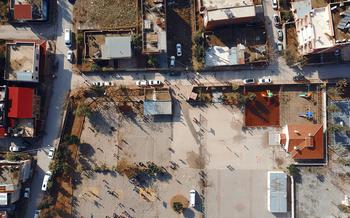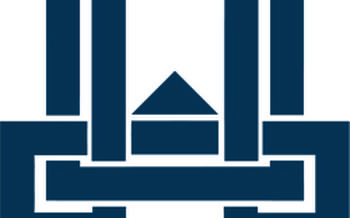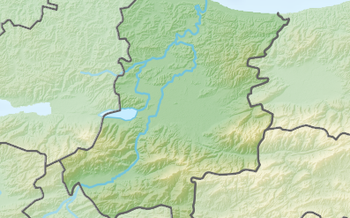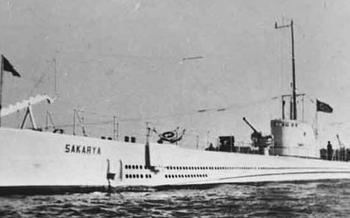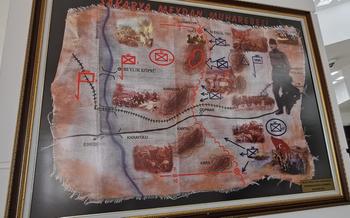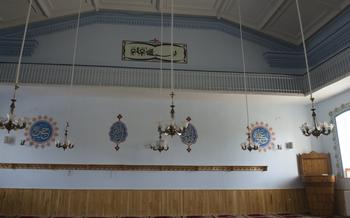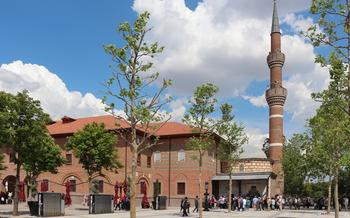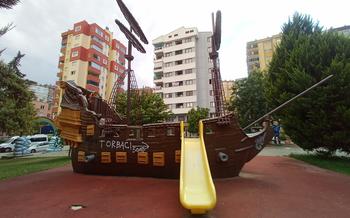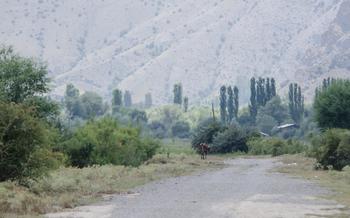
Adapazarı Merkez Camii (Central Mosque)
- About Adapazarı Merkez Camii
- Location and Accessibility:
- Visiting Hours and Dress Code
- Guided Tours and Information
- Prayer Facilities and Ablution Areas
- Exploring the Mosque's Interior
- Exterior Architectural Details
- Women's Section and Viewing Gallery
- Photography and Videography Guidelines:
- Local Traditions and Customs
- Religious Significance and Observances
- Off-Season Visits and Special Events
- Combining with Other Local Attractions:
- Practical Tips for a Rewarding Visit
- Insider Tip: Unveiling Hidden Treasures Through Local Interactions
About Adapazarı Merkez Camii
Adapazarı Merkez Camii, also known as the Central Mosque, stands as a majestic testament to the rich religious and cultural heritage of Sakarya, Turkey. Its history dates back to the 16th century, when it was initially constructed as a modest place of worship. Over the years, the mosque underwent several renovations and expansions, culminating in its current grand and impressive form.
The architectural style of Adapazarı Merkez Camii is a blend of traditional Ottoman and modern influences. Its exterior facade features intricate carvings, decorative tilework, and a series of graceful arches, showcasing the artistry and craftsmanship of its builders. The interior of the mosque is equally awe-inspiring, with a vast prayer hall adorned with elegant chandeliers, intricate calligraphy, and vibrant Islamic art installations that reflect Turkey's rich cultural heritage.
Location and Accessibility:
Adapazarı Merkez Camii is strategically situated in the heart of Adapazarı, Turkey, at an address that is both prominent and easily accessible. Those seeking to visit the mosque can locate it precisely at Hükümet Cad. No:54, 54000 Merkez/Sakarya. To reach the site conveniently, various transportation options are available.
If opting for public transportation, visitors can utilize the extensive bus network that operates in Sakarya. Numerous bus lines, including the 54, 56, and 57, have designated stops within walking distance of the mosque, providing a convenient and affordable mode of travel.
For those who prefer the flexibility of driving, detailed directions can guide them to the mosque's location. From the city center, follow the signs towards the Hükümet Caddesi, a prominent thoroughfare in Adapazarı. Once on Hükümet Caddesi, continue until you reach the mosque, situated on the right-hand side. Ample parking spaces are available in the vicinity, ensuring a hassle-free visit.
Visiting Hours and Dress Code
Visiting Hours:
The Adapazarı Merkez Camii stands open to visitors from all backgrounds, extending an invitation to delve into its spiritual and architectural wonders. Its doors remain unlocked, welcoming those seeking solace, reflection, or simply an appreciation for its cultural significance. While the mosque welcomes visitors throughout the day, it's essential to be mindful of prayer times, which take place five times daily. During these designated periods, it's customary to avoid entering the main prayer hall to ensure a peaceful and respectful atmosphere for worshippers.
Dress Code and Etiquette:
When visiting the Adapazarı Merkez Camii, it's imperative to adhere to the principles of modest dressing and respectful conduct. This demonstrates not only cultural sensitivity but also reverence for the sacredness of the space. For men, it's customary to wear long pants and a shirt that covers their shoulders. Women, on the other hand, are expected to dress conservatively, with clothing that covers their arms and legs, as well as a headscarf to cover their hair. These guidelines ensure that visitors blend harmoniously with the local customs and traditions.
Guided Tours and Information
Adapazarı Merkez Camii offers guided tours for visitors seeking a deeper understanding of its history, architecture, and religious significance. These tours are available in several languages, including English and Turkish, and can be booked in advance or arranged upon arrival. Knowledgeable guides will lead you through the mosque's various sections, explaining the intricate details and answering any questions you may have. They will also provide insights into Islamic culture and traditions, enhancing your overall experience.
For those who prefer to explore at their own pace, self-guided tours are also an option. Informative brochures and audio guides are available to assist you in navigating the mosque and understanding its features. Take your time to admire the stunning architecture, marvel at the decorative elements, and soak in the spiritual atmosphere that permeates the space.
Prayer Facilities and Ablution Areas
Adapazarı Merkez Camii provides dedicated prayer areas for both men and women, ensuring a comfortable and segregated space for worshippers. These areas are designed to facilitate focused prayer and spiritual reflection. Before entering the prayer hall, it is customary to perform ablution, a ritual cleansing process that purifies the body and mind. Ablution facilities are conveniently located within the mosque, allowing visitors to perform the necessary steps before offering their prayers. These facilities include designated areas for men and women, ensuring privacy and adherence to Islamic customs.
Men's Prayer Area: The men's prayer area is typically located on the main floor of the mosque, directly facing the qibla (the direction of Mecca). It is a spacious and well-lit area, accommodating a large number of worshippers.
Women's Prayer Area: The women's prayer area is usually situated on a separate floor or section of the mosque, ensuring privacy and segregation. It is designed to provide a comfortable and conducive environment for female worshippers.
Ablution Areas: Ablution areas are situated near the entrances of the mosque, allowing visitors to perform the ritual cleansing before entering the prayer hall. These areas feature designated spaces for men and women, ensuring privacy and adherence to Islamic customs.
Steps for Performing Ablution: Ablution involves washing specific parts of the body with water in a prescribed order. The steps typically include washing the hands, rinsing the mouth and nose, washing the face, wiping the head and ears, and washing the feet. Detailed instructions on performing ablution can be found at the mosque or online.
Exploring the Mosque's Interior
Step inside the Adapazarı Merkez Camii and be captivated by the grandeur of the main prayer hall. Its soaring ceilings, adorned with intricate patterns and calligraphy, create an atmosphere of awe and reverence. The expansive space can accommodate thousands of worshippers, fostering a sense of unity and togetherness.
As you wander through the mosque's interior, marvel at the stunning decorative elements that adorn every corner. From the vibrant stained-glass windows that bathe the space in a kaleidoscope of colors to the hand-painted tiles that depict scenes from Islamic history, every detail has been meticulously crafted to inspire and uplift the spirit.
Take a moment to appreciate the beautiful calligraphy that adorns the walls and mihrab, the niche that indicates the direction of Mecca. These intricate inscriptions, executed with precision and artistry, showcase verses from the Quran and invoke a sense of devotion and tranquility.
Don't miss the exquisite Islamic art installations that grace the mosque's interior. From the intricate mosaics that depict geometric patterns to the delicate carvings that adorn the minbar, the pulpit from which the imam delivers sermons, each artwork tells a story and adds to the mosque's rich cultural heritage.
Exterior Architectural Details
The Adapazarı Merkez Camii's exterior is equally captivating, showcasing intricate dome and minaret designs that blend traditional Islamic architecture with modern aesthetics. The domes, adorned with turquoise and gold tiles, create a striking contrast against the clear blue sky. Their shape and proportion add a sense of grandeur and symmetry to the overall structure. The minarets, reaching towards the heavens, are adorned with intricate carvings and inscriptions. These architectural details serve as a testament to the skill and artistry of the craftsmen who built the mosque.
The symbolism and meaning embedded in the mosque's architecture are profound. The dome, a recurring element in Islamic architecture, represents the heavens and the unity of God. The minarets, serving as a call to prayer, symbolize the connection between the earthly realm and the divine. The surrounding gardens and landscaping, meticulously maintained, offer a tranquil oasis amidst the bustling city. The presence of water features, such as fountains or pools, adds a serene touch, echoing the importance of purity and cleanliness in Islamic tradition.
Women's Section and Viewing Gallery
Adapazarı Merkez Camii, like many mosques in Turkey, has a designated women's section to ensure gender segregation during prayers and religious observances. This area is typically located on the upper level of the mosque, offering female visitors a private and comfortable space to worship. It features dedicated prayer areas with prayer rugs and seating arrangements tailored to women's needs.
The viewing gallery is an elevated platform within the women's section that allows female visitors to observe the main prayer hall from a distance. This provision ensures that women can fully participate in religious ceremonies and follow the sermon without being in the direct line of sight of the male worshippers below. The gallery offers a unique perspective of the mosque's interior, showcasing the intricate details and grandeur of the architecture.
When visiting the mosque, female visitors are expected to dress modestly, covering their hair and wearing loose-fitting clothing that respects the religious customs and traditions of the local community. This dress code ensures that women can participate in the mosque's activities without causing any disruption or attracting unnecessary attention.
Photography and Videography Guidelines:
Adapazarı Merkez Camii, like many religious sites, has specific guidelines regarding photography and videography. Visitors are generally permitted to take photographs and videos for personal, non-commercial use as long as they adhere to the following guidelines:
-
Designated Areas: Photography and videography are allowed in designated areas of the mosque, typically the exterior grounds and common spaces. However, certain areas, such as the prayer halls and women's section, may be restricted for privacy reasons.
-
Respecting Sanctity: Visitors should always be mindful of the sacred nature of the mosque and avoid taking photographs or videos that could be disrespectful or disruptive to worshippers. This includes using flash photography or capturing images of individuals engaged in prayer or other religious observances without their consent.
-
Seeking Permission: For professional photography or videography, it is advisable to seek permission from the mosque's administration or local authorities. This is particularly important if you plan to use the images or footage for commercial purposes, such as publications, marketing, or broadcasting.
Local Traditions and Customs
Understanding Turkish Hospitality and Etiquette
When visiting Adapazarı Merkez Camii, it is essential to be mindful of local traditions and customs to ensure a respectful and enriching experience. Turkish people are renowned for their warm hospitality and welcoming nature. They highly value politeness and respect, so it is crucial to greet people with a friendly "Merhaba" (Hello) and a smile. When interacting with locals, maintain eye contact and address them with appropriate honorifics, such as "Bey" (Mr.) or "Hanım" (Mrs.). Remember to remove your shoes before entering the mosque, as is customary in Turkish culture, and place them neatly on the designated shoe racks.
Interacting with Locals in a Respectful Manner
When engaging in conversations with locals, be mindful of topics that may be considered sensitive or controversial. Refrain from discussing politics or religion unless explicitly invited to do so. Instead, focus on neutral subjects like Turkish culture, history, or the local cuisine. Show genuine interest in their perspectives and experiences, and avoid making assumptions or generalizations about their way of life.
Avoiding Offensive Behavior and Language
It is important to be conscious of your body language and gestures while visiting the mosque. Avoid pointing your feet or shoes towards people, as this is considered disrespectful. Additionally, be mindful of your volume and tone of voice, as speaking loudly or boisterously is generally frowned upon in Turkish culture. Refrain from using offensive language or making inappropriate jokes, as these may cause offense or misunderstandings.
Religious Significance and Observances
Adapazarı Merkez Camii holds immense religious significance for the Muslim community in Sakarya. It serves as a central hub for daily prayers and religious observances. During prayer times, the mosque reverberates with the collective recitation of verses from the Holy Quran, creating a serene and spiritual atmosphere. Worshippers from all walks of life gather in the grand prayer hall, united by their common faith and devotion.
The mosque also plays a crucial role in marking special religious celebrations and festivals. During the holy month of Ramadan, the mosque organizes special night prayers known as "Tarawih," where the entire Quran is recited over the course of the month. The annual Eid al-Fitr and Eid al-Adha celebrations are observed with fervor and joy, with communal prayers and festivities held within the mosque premises.
Witnessing these religious rituals and observances at Adapazarı Merkez Camii offers visitors a unique opportunity to immerse themselves in the spiritual traditions of Islam and gain a deeper understanding of Turkish Muslim culture. Visitors are welcome to observe these events respectfully from designated areas, while maintaining silence and avoiding disruptions to the ongoing prayers and ceremonies.
Off-Season Visits and Special Events
Visiting Adapazarı Merkez Camii during the off-season offers a unique opportunity to experience its tranquility and grandeur without the crowds. The absence of large tour groups allows for a more intimate and contemplative exploration of the mosque's intricate details. Moreover, the cooler temperatures of the off-season make it an ideal time to appreciate the mosque's serene ambiance.
The mosque takes on a different charm during the off-season, as it becomes a place of quiet reflection and spiritual rejuvenation. Visitors can immerse themselves in the mosque's serene atmosphere, marvel at its architectural beauty, and connect with the local community on a deeper level.
In addition, the off-season often coincides with special events and festivals that showcase Turkish culture and traditions. These events provide a chance to witness vibrant performances, indulge in local delicacies, and gain a deeper understanding of the region's rich heritage.
Whether it's witnessing the mosque's seasonal decorations during the holidays or attending a traditional Sufi music concert, there's always something special happening at Adapazarı Merkez Camii during the off-season. Embrace the opportunity to experience the mosque's unique charm and immerse yourself in the vibrant tapestry of Turkish culture.
Combining with Other Local Attractions:
When planning your visit to Adapazarı Merkez Camii, consider exploring other nearby attractions to enhance your experience. The city of Sakarya is rich in historical, cultural, and natural treasures waiting to be discovered.
-
Historical Sites: Sakarya is home to several historical sites that offer a glimpse into Turkey's past. Explore the ancient city of Gordion, once the capital of the Phrygian kingdom, and marvel at its well-preserved ruins, including the Gordion Acropolis and the Midas Mound.
-
Museums and Cultural Centers: Immerse yourself in the region's rich culture by visiting the Sakarya Museum, showcasing archaeological artifacts from the area. The Sakarya Atatürk Museum, dedicated to the life and achievements of Mustafa Kemal Atatürk, Turkey's founder, is also worth a visit.
-
Shopping and Dining: After your spiritual and cultural exploration, indulge in the vibrant atmosphere of Sakarya's city center. Shop for local handicrafts, souvenirs, and textiles at the bustling bazaar, or savor the flavors of Turkish cuisine at one of the many restaurants offering traditional and international dishes.
Practical Tips for a Rewarding Visit
When visiting the Adapazarı Merkez Camii, it is essential to prioritize respect and mindfulness to ensure a meaningful and peaceful experience.
Respectful Attire and Behavior: - Visitors should dress modestly, covering their shoulders and knees. Removing shoes is required upon entering the mosque.
Allocate Ample Time: - Dedicate sufficient time to fully explore the mosque's interior and exterior, allowing for quiet contemplation and appreciation.
Maintain Tranquility: - Refrain from loud conversations and disruptive noises to preserve the serenity of the prayer environment.
Respectful Conversations: - If engaging with locals or fellow visitors, maintain a respectful and courteous tone, avoiding sensitive topics.
Photography Etiquette: - Seek permission before taking photographs, especially when people are present, and avoid using flash photography.
Mindfulness of Timing: - Be mindful of prayer times, as the mosque may be closed to visitors during these periods.
Insider Tip: Unveiling Hidden Treasures Through Local Interactions
To truly immerse yourself in the essence of Adapazarı Merkez Camii, seek guidance from local mosque officials. They can provide valuable insights into the mosque's history, ongoing projects, and special events. Engaging with community members offers a unique opportunity to learn about local traditions, customs, and perspectives. Embrace their hospitality and embrace their stories for a deeper understanding of the mosque's significance beyond its architectural beauty.
